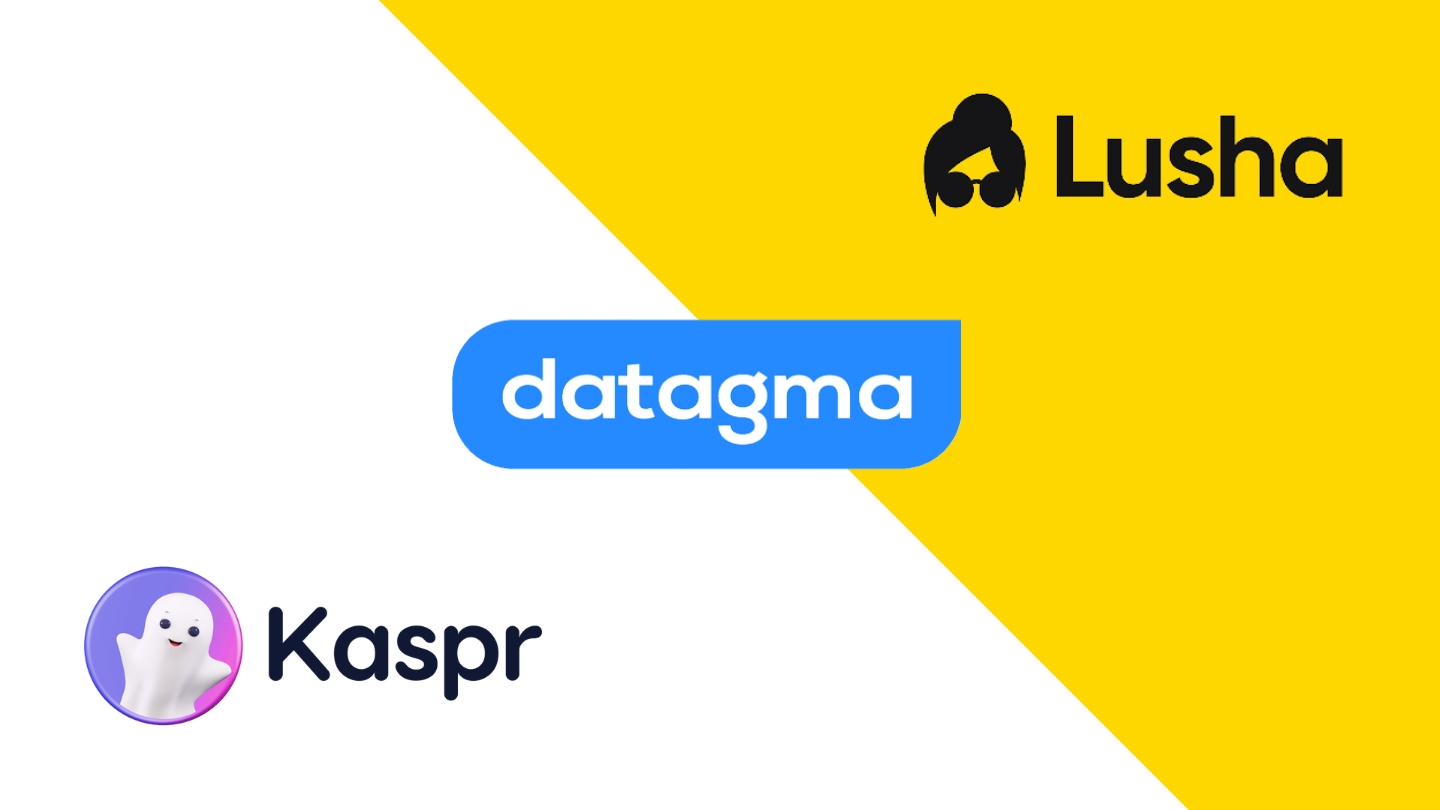The BANT marketing methodology helps you in this work of qualifying a lead. It allows you to know the state of your prospect and whether or not he is ready to move to the next level, i.e. the purchase. In this article, we will define what exactly the BANT methodology is, what it is used for within a company, and then we will present other lead qualification frameworks that you can implement within your organisation.
Sommaire
BANT: definition
BANT is a marketing methodology that allows salespeople to determine whether or not a prospect is ready to make a purchase. This methodology, divided into four parts, allows to qualify and score a potential customer. These four parts, also known as variables, are interchangeable. If one of the four parts does not answer the questions you need to ask, then the lead is not yet “mature” enough to make a purchase. This has become one of the most used methods in B2B marketing, so let’s take a closer look at what BANT actually is and what it means.
1. B for Budget
Budget is a central issue, whether in B2B or B2C. If a prospect does not have the budget to afford what you are offering, there is no point in taking the BANT method any further. Here are some useful questions you could ask to assess the budget of your leads:
- What are you currently spending on this problem or need?
- We have calculated that your team loses £X per [week, quarter, year] on this issue. How does this compare to the budget you have calculated?
- We have calculated that your team could potentially earn £Y per [week, quarter, year] by making this [change, investment]. How does this compare to the budget you have calculated?
- What budget do you have?
- How much would it cost to do what you want to do by yourself?
- How will the price affect your final decision?
- Have you defined a price range?
- What return on investment do you expect to achieve?
2. A for Authority
First and foremost here, you will need to know who will have the final say on the final purchase. Often, in medium or large companies, the person wanting more information about what you are offering is not the person who will make the purchase. This is called complex selling. So you will have to rank your different contacts from least to most important to find the final decision maker. This aspect applies more to B2B, as you will have understood, but don’t neglect it in B2C too. Think of people who give gifts, parents, etc. In reality, complex selling is much more common than you think and it is essential to understand who you are talking to. Some sample questions for this:
- Who will use the product/service?
- When was the last time you bought a similar product? What was the decision-making process like?
- This is usually the stage where my client brings [the CFO, other stakeholders, their manager] to [discuss X, get their views on Y]. Would you like to invite [Z person/people] to our next meeting?
- Will anyone else be involved in the final decision making?
- Is there anyone in particular you would like me to contact to speed up the process?
3. N for Need
What could be better for a lead than to feel guided, advised, towards a much more informed decision? To do this, you will need to know your lead’s needs inside out thanks to a thorough intelligence phase. In particular, this will enable you to understand whether the lead fits into your “ICP” category: Ideal Customer Profile. In many cases, your solution may partially meet other needs than the one you are trying to solve. For example, if you sell business cards. A prospect contacts you to make playing cards. You probably have the capabilities to meet that need as well. But it is not your core business. Schools of thought differ on this: some go so far as to say that you should turn away customers who do not have the main need you are trying to solve. Whatever happens, it is fairly certain that your conversion rates will not be the same.
- When did you identify [problem, opportunity]?
- What steps have you already taken to address this?
- How important is it to meet your personal goals in [company]? Your career goals? Your department?
- What are your main priorities at the moment?
4. T is for Timing (Emergency)
Every purchase necessarily involves time, which can be measured. The time taken must be reasonable if you do not want to scare off your future customers.
- Are there any upcoming events / deadlines for which you would like to have a solution in place?
- Are you planning to [insert relevant project (launch a lead generation campaign, a major hiring spree, etc.)]?
- What is your target [for lead generation, revenue, retention, etc.] for [the next quarter, the end of the year]? Will you be able to meet this target without any changes?
- Working backwards from the date you gave me, we should finalise our agreement by [earlier date]. Does this timeframe seem reasonable to you?
BANT: What is it for?
BANT is a precise methodology, a framework that every company should have to ensure that everyone is talking about the same thing and going in the same direction. The BANT methodology allows you to define every input and output during the different stages of the business qualification process. You can adjust the BANT framework to suit your business model and define specific questions for each concept as you seek to quickly qualify your prospects. But, remember that the 4 points of BANT are essential to talk about SQL(Sales Qualified Lead).
You can ask the above questions via web forms, emails or phone calls. The aim is to maximise the number of BANTs but also to minimise the cost of a BANT. But even with a good approach, this cannot always work. So you need to design a comprehensive scoring process based on your ideal customer (KPI). When you define a questionnaire, you can have a practical and unified way of choosing how to focus your sales team. Spending more effort on the best prospects can not only increase sales, but also get you more loyal customers, longer. You can also use the BANT results to refine your offer for each prospect, customising certain critical elements to better meet their expectations.
For B2B or SaaS companies, qualification by phone calls is generally advantageous because you can ask questions easily in a traditional conversation. You can therefore qualify your prospect in a short time. You can also add other criteria that can help you improve your customer profile.
A classic example of a BANT trade qualification
- Sales representative Do you have the budget to host us?
- Prospect Yes, this is not a problem.
- Sales representative: will you be the one using the product?
- Prospect: No. My sales team will use it.
- Sales representative: And you need our product because you have a problem with lead generation?
- Prospect: Yes, that’s right.
- Sales representative: When do you want the solution to be implemented in your company?
- Prospect: Erm… In about two weeks.
Perfect. The lead is now qualified! While this approach is ideal, if you are still using BANT in the same way as you did half a century ago, it is likely not to work. Not because BANT has lost its effectiveness, but because it is not being implemented by salespeople to align with modern sales process changes.
Other commercial qualification frameworks
Lead generation and qualification takes time, and the BANT method deserves to be dusted off. As your sales team continues to grow, consider these other types of lead qualification strategies, each with its own purpose:
FAINT: Funds, Authority, Interest, Need, Timing
This method of lead qualification looks for prospects who are not always planning a purchase but still have the will to make a purchase, if the right product arrives. Companies that convert well with a FAINT approach tend to have known buying power, so funding leads the discussion.
- Funds: Focus initially on organisations and buyers who have the financial capacity or funds to buy from you. They may not have a budget, but they have overall financial means to spend. Sell where the money is.
- Authority: focus on finding out who has the power to make decisions about the use of funds. If the organisation has the financial capacity to spend if it finds something worthwhile, you need to deal with the people who have the authority to allocate the funds.
- Interest: arouse the buyer’s interest in what is possible.
- Need: find out what specific needs you can solve. They may be latent – hidden – but they are there, and you need to find them.
- Timing: define the purchase intent and a clear timeline for doing so. This may, of course, take a number of conversations, may involve a number of decision makers and influencers, and may take some time to do. Once you have done this, you now have a qualified prospect and a real sales opportunity.
ANUM: Authority, Need, Urgency, Money
Start by identifying the decision-maker within the company, then look to solve an existing problem. Ask the prospect how quickly they can make a decision and whether they have the money to make the purchase.
- Authority: when talking to the decision-maker, make sure you note their title and function so that you can align their needs with your product.
- Need: make sure you find lists of companies in the target industry you are looking for and their size
- Urgency: keep abreast of companies and their latest press releases. If a salesperson is sensitive to the urgent needs of companies, it can help the sales process. If a company has announced that it is expanding its inside sales team or has a new vice president of sales, this could be a signal to contact them.
- Money: know where the money is. Depending on whether a business is growing, has recently announced a funding round or is older, this can help you understand who is spending more easily in the business.
FIELD: Changes, Authority, Money, Prioritization
CHAMP is about selling to overcome a problem. The seller capitalises on the lead’s urgent need to overcome a challenge.
- Change: Your prospect buys things because they have a challenge, and if you have the solution, then you have the real start of an “opportunity”.
- Authority: you need to ask questions of the right people in a company. Authority means that you don’t want to waste your time and energy talking to the wrong person. It doesn’t matter if the initial lead contact has low authority – they can guide you to the right person in the company.
- Money: never start by talking about money. If your prospect cannot afford the product or service in question, then you cannot sell it. Find out what your prospect’s challenges and problems are, and then find out what they want from the investment they need to make. You have the opportunity to attract their interest in the benefits they can gain if they invest in your product or solution.
- Prioritisation: you need to be very specific when discussing the prospect’s timeline and priority list. If they say they need to solve this problem in the next week, then “it’s a top priority”.
MEDDIC: Metrics, Economic Buyer, Decision Criteria, Decision Process, Identify Pain, Champion
The MEDDIC approach has been developed to help increase the accuracy of forecasts.
- Metrics: First, find out what the prospect hopes to get out of your solution. For example, the company may want to increase its production by X%, it may want to get its products to market in X weeks, or it may want to save at least 20% on production costs.
- Economic buyer: you need to know who functions as the economic buyer of the company or who has the authority to make decisions and authorise expenditure. Knowing the economic buyer and their mindset will help you close sales.
- Decision criteria: you also need to understand what criteria the company uses to make its decisions. Companies are often offered several solutions from different sources, forcing them to compare and choose. If you understand how they make that choice, you can better tailor your message.
- Decision process: while the decision criteria tell you what goes into a company’s decision, the decision process tells you how that decision is actually made and followed. A decision process will include who makes the decision, the timeline on which they operate and any formal approval process in place.
- Identify the need: a prospect must have a need before looking for a solution, and it is essential to know this.
- Spokesperson: find a spokesperson, someone on the inside who is invested in your success and who lobbies for you. The champion will probably be the person who will benefit most from your solution. Because they want your solution, they want you to succeed and will use their influence to sell your solution from within.






